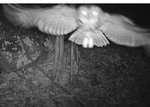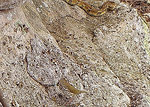You have probably seen pictures on the internet of deer or other wildlife taken with remote cameras. Maybe you even have one of these so-called “trail cams” in your backyard. Whether you …
Stay informed about your community and support local independent journalism.
Subscribe to The River Reporter today. click here
This item is available in full to subscribers.
Please log in to continue |



You have probably seen pictures on the internet of deer or other wildlife taken with remote cameras. Maybe you even have one of these so-called “trail cams” in your backyard. Whether you call them trail cameras or game cameras, they all do the same thing. They take pictures without human intervention, either by motion detection or by taking time-lapse, interval images.
The first trail cams are said to have been used in the 1980s. They consisted of a 35mm-film camera triggered by a two-piece infrared light source and a matching detector. When an animal broke the beam, the camera would trigger. Today, they are smaller and easier to use. They use digital sensors and infrared technology to capture night-time images. Most of them are small enough to be inconspicuously strapped on a tree trunk in a couple of minutes.
Hunters use trail cams to scout trails for deer or other game animals; several can be deployed in different areas. Wildlife agencies and researchers use them to monitor all manner of wildlife in feeding areas or denning locations. Even landowners use them just to see who is coming or going.
Trail cams are a fun way to monitor wildlife when you can’t be there all the time. Depending on how you use them, the batteries and memory cards can last for months and are easily swapped out in the field. In this pandemic age, viewing your trail-cam images or video can be entertainment for the evening.
A trail cam can also pic up some unexpected species or events. The images in this column are some photo bombs from an ongoing timber rattlesnake hibernacula study in central Pennsylvania.
Comments
No comments on this item Please log in to comment by clicking here